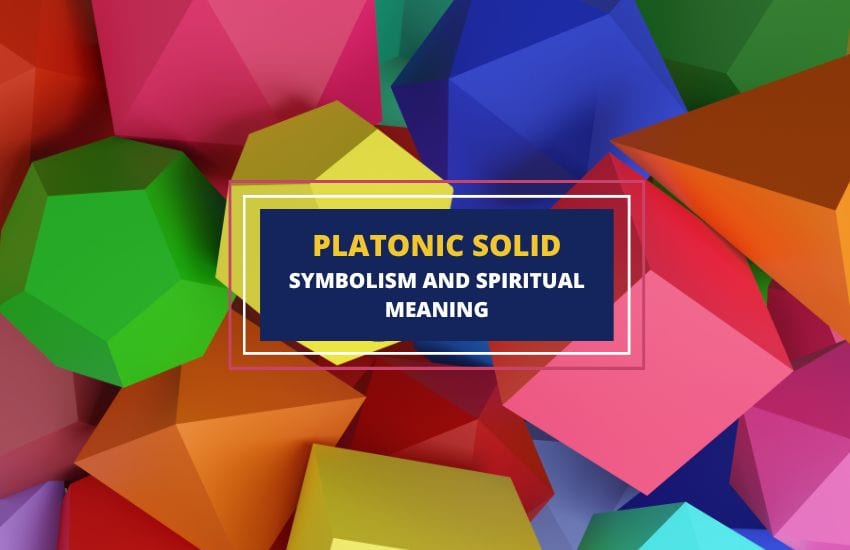
Table of Contents
In a world of countless objects, there are five unique shapes that are so special, they’ve captivated the human imagination for thousands of years.
These shapes share similar properties and are the only five of their kind.
We’re talking about Platonic solids.
What Are Platonic Solids?
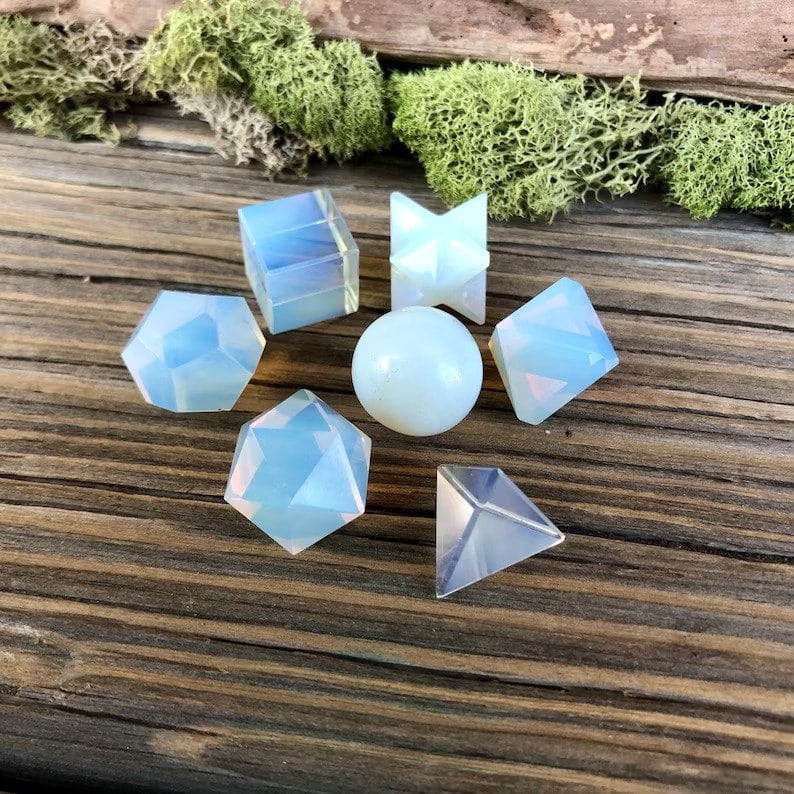
These are the tetrahedron, hexahedron, octahedron, dodecahedron, and icosahedron. They’re named after the ancient Greek philosopher Plato, who associated them with the classical elements: fire, earth, air, the universe, and water, respectively.
Plato wrote about the solids in his dialogue “Timaeus” around 360 B.C. In the text, the main character, Timaeus, provides a detailed account of the creation of the universe, relating it to geometry and the five Platonic solids.
The dialogue sees Timaeus describing these solids and elements as the raw materials used by the Demiurge (a divine craftsman or god-like figure) to create the universe based on eternal Forms. The universe to Plato, was a living being with a soul, and these elements (represented by the solids) acted as the foundation of its physical existence.
However, while Plato is credited with popularizing these shapes, the Greeks already knew about the solids long before him.
Pythagoras and the Five Solids
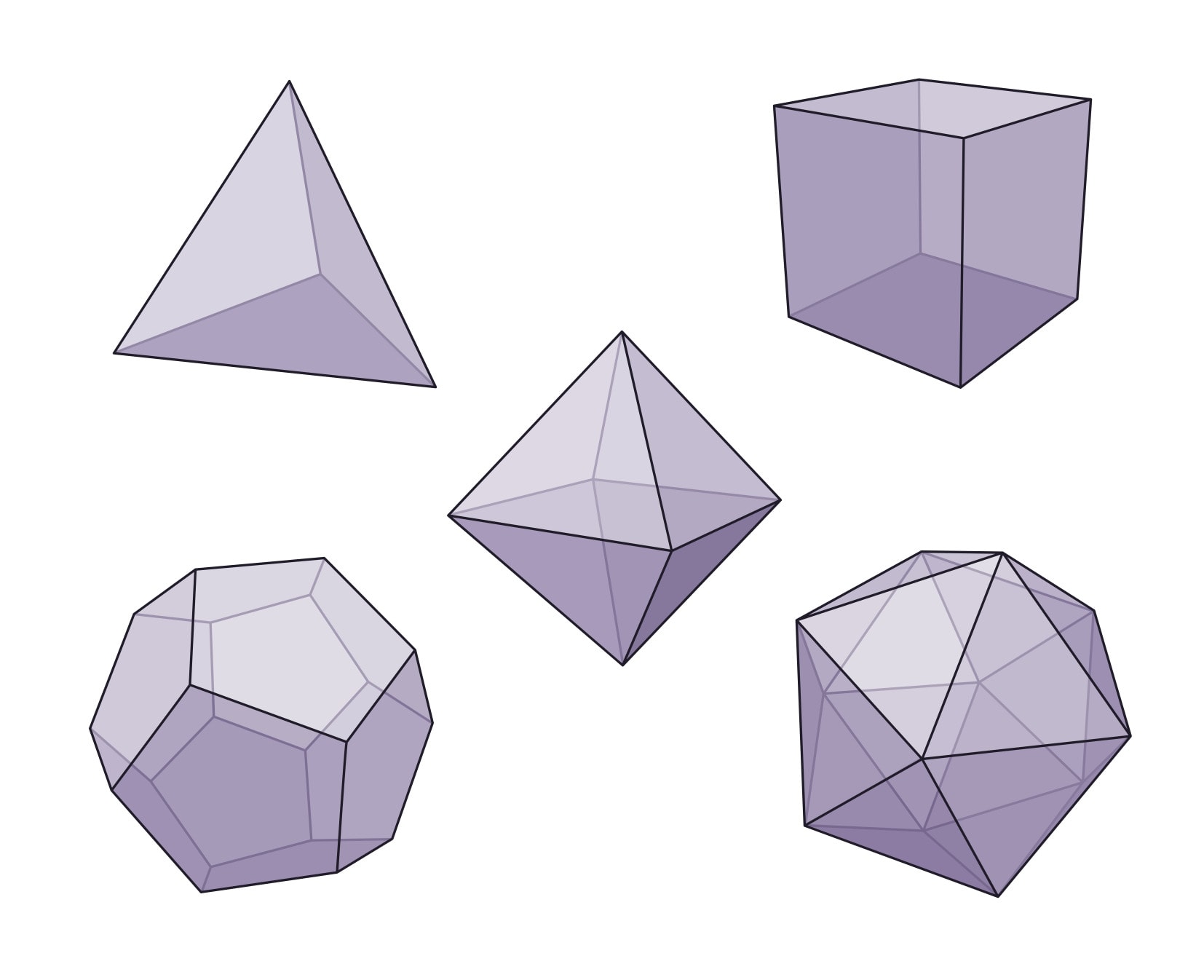
The ancient Greeks, including Pythagoras and his followers known as the Pythagoreans, studied these shapes earlier than Plato.
In fact, Pythagoras is credited with discovering three of the solids, which were the tetrahedron, cube, and dodecahedron. If he didn’t discover them, he may have become familiar with them from the time he spent in Egypt and Babylon and then brought the knowledge to Greece.
The ancient Egyptians likely already knew about at least three of the solids, and their ideas would have influenced Pythagoras, who lived there for about 22 years.
Theaetetus, a contemporary of Plato, may have discovered the other two solids. Whether this is true or not, what we do know is that Theaetetus described all five of the shapes. And he was also the first to prove that this group of solids are the only five regular convex polyhedra that exist.
What’s Special About Platonic Solids?
The beauty and importance of the Platonic solids lies in their symmetry: each face, angle, and side within a particular solid is identical. What’s more, all the edges or vertices fits perfectly inside a sphere. This perfection in form, a microcosm of cosmic harmony, didn’t escape the notice of ancient thinkers.
For Plato, these shapes were not mere mathematical curiosities; they were the very building blocks of the universe through their association with the five elements.
Each solid corresponded to an element, the fundamental substances that combined in various ways to form the material world.
So, let’s break down each of the platonic solids in detail.
1. Tetrahedron (4 triangular faces)
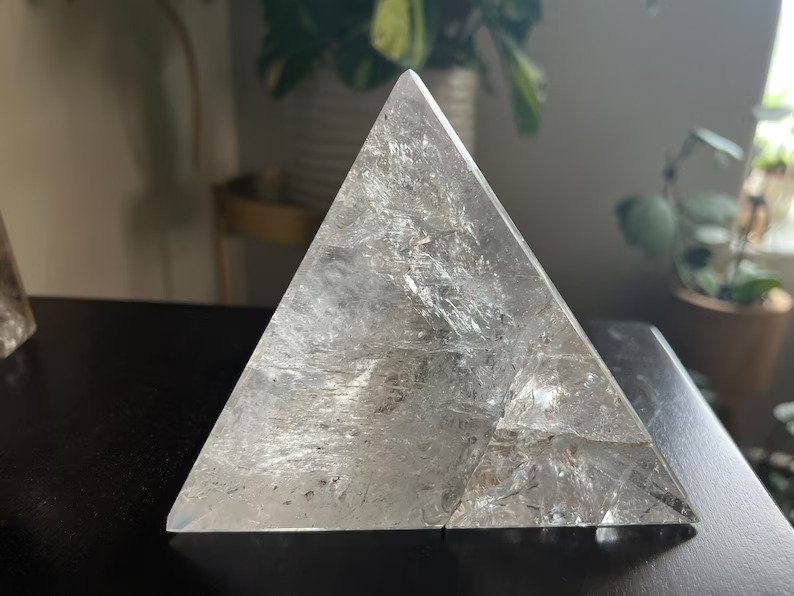
As the simplest of the Platonic solids, the tetrahedron represents the concept of a minimum limit or starting point.
In chemistry, the tetrahedral shape describes the molecular geometry of certain compounds where a central atom forms four bonds.
In Plato’s “Timaeus,” the tetrahedron is associated with the element of fire.
Its sharp points and edges symbolize the heat and flame of fire.
In some spiritual traditions, it represents the solar plexus chakra and personal power.
2. Hexahedron or Cube (6 square faces)
It is a common shape in nature and human made structures due to its stability.
Plato linked the cube to the element of earth, suggesting stability, grounding, and a solid foundation.
In sacred geometry, it’s seen as the physical realm and material world.
3. Octahedron (8 triangular faces)
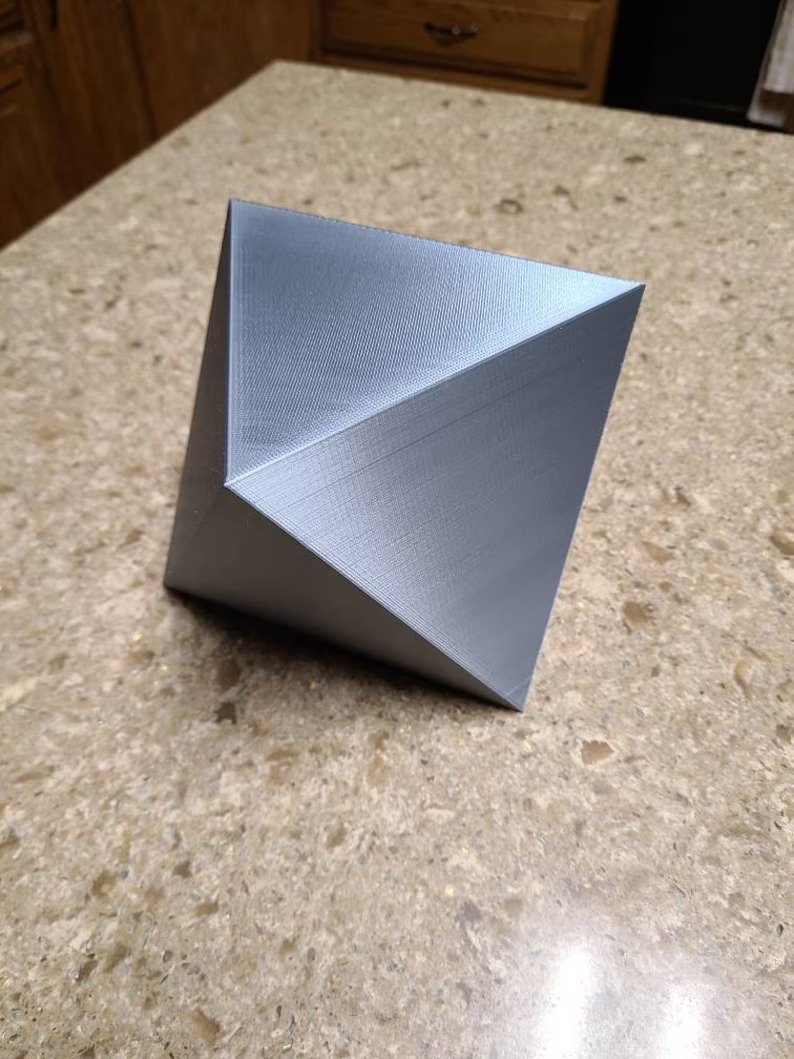
The octahedron is dual to the cube, meaning if you connect the centers of adjacent faces of a cube, you get an octahedron and vice versa.
Representing the element of air, it’s associated with the heart chakra and the processes of the mind, intellect, and integration.
4. Dodecahedron (12 pentagonal faces)
This solid has a rich history in mathematics and was a subject of intrigue for many ancient scholars because of its complexity and how rare it is in the natural world.
Plato associated the dodecahedron with the cosmos or the universe itself.
It’s seen as a representation of the divine, often linked to the heavens, and in some traditions, it’s related to the third eye chakra, suggesting intuition and spiritual awakening.
5. Icosahedron (20 triangular faces)
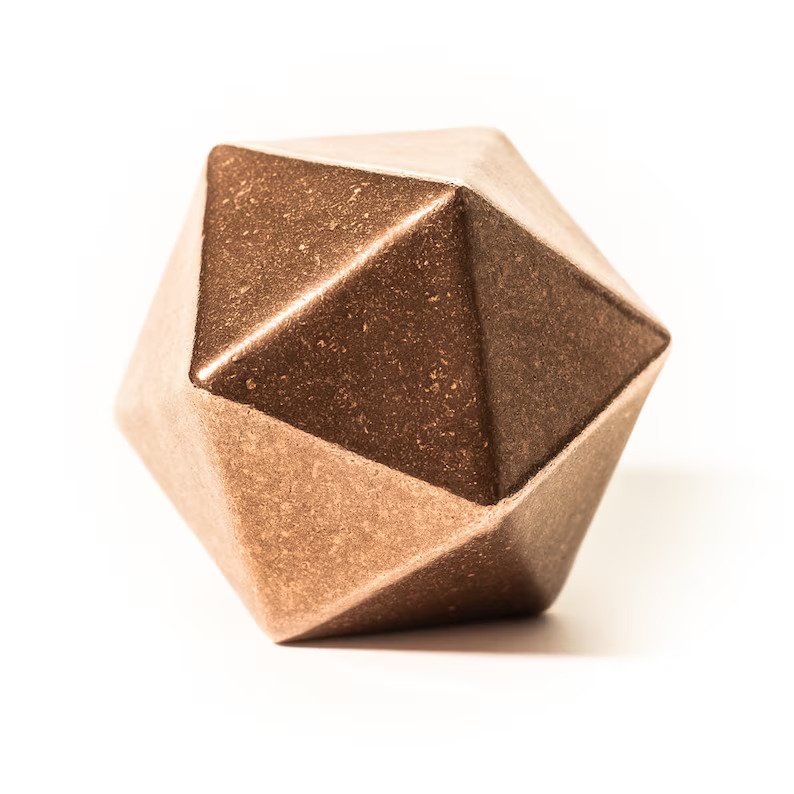
Dual to the dodecahedron, the icosahedron represents equilibrium and balance in geometric terms.
Corresponding to the element of water, it symbolizes flow, emotions, and the deeper layers of the subconscious.
In spirituality, it’s linked to the sacral chakra, denoting creativity and procreation.
Importance of the Five Platonic Solids
The Platonic solids hold significance in a variety of areas, spanning mathematics to recreational games. Here’s the impact that the Platonic solids have had on various fields.
- Mathematics: As foundational shapes in geometry, they represent the only five regular convex polyhedra, serving as key subjects in the study of symmetry and spatial relations.
- Physics: The symmetries of Platonic solids are important in atomic and molecular structures. For instance, certain molecular formations adopt tetrahedral or icosahedral shapes.
- Chemistry: The arrangement of atoms in some molecules, like methane (CH₄), resembles a tetrahedron, and some crystals, like salt, form in a cubic lattice.
- Biology: Some viruses exhibit icosahedral symmetry, making this Platonic solid relevant in virology.
- Philosophy: Ancient philosophers like Plato associated these solids with fundamental elements of existence.
- Sacred Geometry and Spirituality: Platonic solids are seen as symbolic representations of the universe’s fundamental aspects, with each solid linked to an elemental force.
- Art and Architecture: Due to their aesthetic appeal and symmetry, these solids inspire designs in sculptures, buildings, and jewelry.
- Recreational Games: Dice used in many role-playing games are shaped as various Platonic solids.
Metatron’s Cube and the Five Platonic Solids
One sacred geometry shape that has a strong association with the five platonic solids is the Metatron’s cube. When you look closely at Metatron’s Cube, you can trace the 2D outlines of the five Platonic solids within its design.
As the platonic solids are the building blocks of the universe, this connection indicates that Metatron’s Cube is a sort of “map” or “blueprint” for the universe.
By containing all the Platonic solids, the cube symbolizes the underlying patterns and structures governing everything from the microcosm (like atoms) to the macrocosm (like stars and galaxies).
This is why Metatron’s cube is so highly valued in sacred geometry.
Platonic Solids Over Time
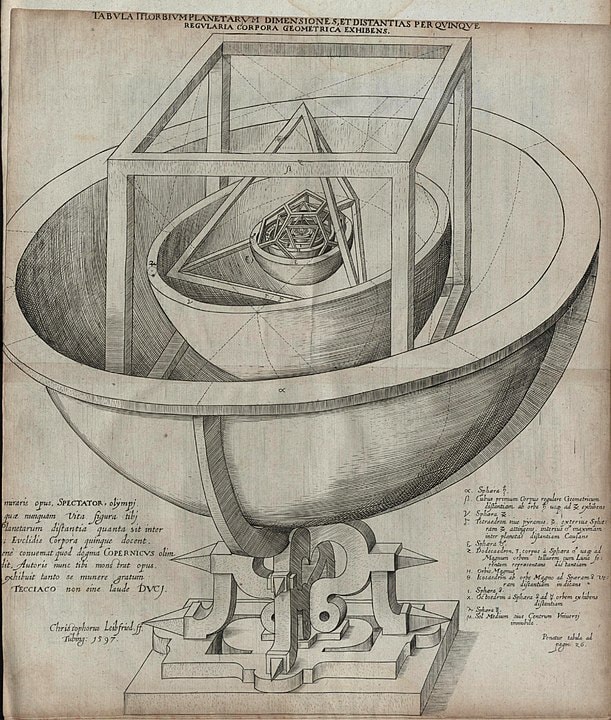
It wasn’t just the Greeks who revered these forms. These solids appear in various ancient cultures, often ascribed with spiritual significance.
Shapes that look like the solids have been found in Scotland dating back 5000 years.
The cube, for instance, can be found in sacred architecture, like the Holy of Holies in Solomon’s Temple or the Kaaba in Mecca.
Fast forward to the Renaissance, a period of revived interest in classical knowledge, and the Platonic solids were once again at the forefront, prominent in science, art, and spirituality.
Artists like Leonardo da Vinci produced meticulous drawings of these shapes, celebrating their geometric perfection and their deeper symbolic meanings.
Johannes Kepler, the renowned 17th century German astronomer and mathematician, believed that the distances between the planets’ orbits could be explained by placing the five Platonic solids inside one another in a specific order, suggesting a hidden geometric structure to the universe.
How Are the Five Platonic Solids Viewed Today?
In modern times, while our understanding of the physical world has expanded far beyond the classical elements, the allure of the Platonic solids remains.
They are now seen as foundational shapes in the study of geometry and are vital in various scientific fields. In metaphysical and spiritual circles, these solids are believed to hold unique vibrational frequencies, making them popular tools for meditation and energy work.
But why have these five solids, simple in structure yet infinite in interpretation, maintained such a lasting grip on our collective imagination? Perhaps it’s their intrinsic perfection, reminding us of the harmony inherent in the universe.
Or maybe it’s their unbroken link to our past, a geometric thread that connects us to the ancients, their dreams, and their understanding of the cosmos.
They stand as enduring symbols of the quest for knowledge, the patterns underlying existence, and the interconnectedness of all things. Through them, we’re reminded that the universe, in all its vast complexity, is bound together by simple, elegant truths.
Wrapping Up
Platonic solids, often called the building blocks of the universe, have been studied and investigated for thousands of years. It’s easy to see how their simplicity and at the same time the complexity of these shapes have captured the human imagination. The impact of the five solids has been significant, with notable influences in a variety of fields.
Related articles
9 Sacred Geometry Symbols: An In-Depth Guide
Sacred Geometry Tattoo Meaning and Designs
The Mandala Symbol: Understanding Its Deep Meanings
The Power of Triangles: What’s the Spiritual Significance of Triangle Symbols?







